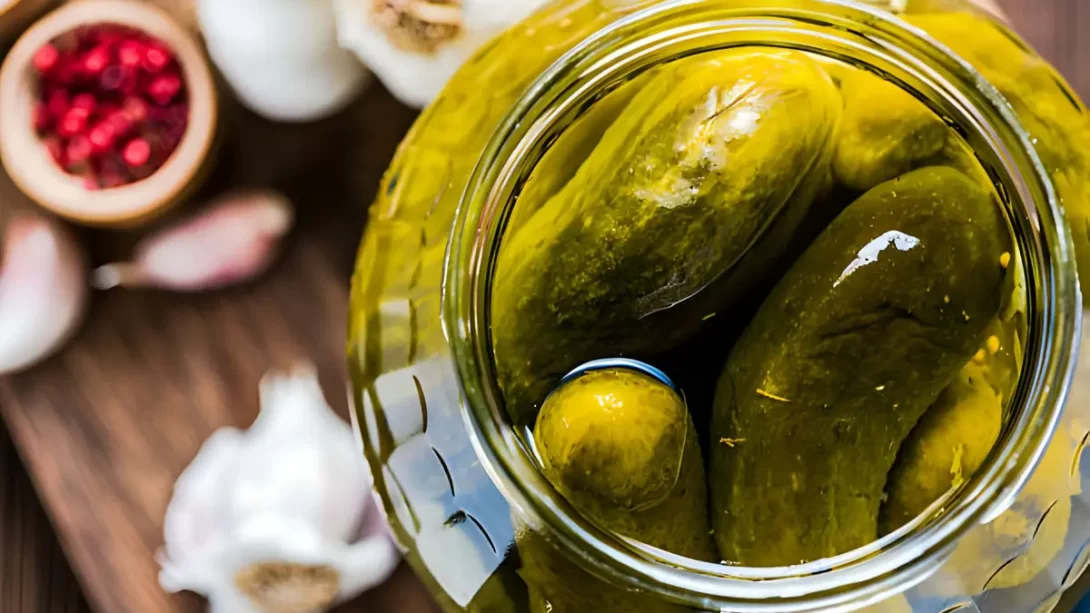Pickle brine, the flavorful liquid used for preserving cucumbers and other vegetables, is a staple in many kitchens. It’s a mixture typically composed of vinegar, water, salt, and a variety of spices, imparting a unique tang and zest to pickles. A frequently asked question by both home cooks and pickle enthusiasts is whether this brine can be reused effectively and safely. This article explores the possibilities and considerations involved in reusing pickle brine.
Pickle Brine
Pickle brine is more than just a preserving liquid; it’s a concoction that adds flavor, acidity, and saltiness to the pickling process. The primary ingredients typically include vinegar, which provides acidity, and salt, which aids in preservation. Spices like dill, garlic, and mustard seeds are often added for flavor. The brine’s high acidity is crucial, as it creates an environment that inhibits the growth of harmful bacteria, making it key to the preservation process. Understanding the composition and role of pickle brine is essential when considering its reuse.
Safety Considerations for Reusing Pickle Brine
When thinking about reusing pickle brine, food safety is paramount. The primary concern is the potential reduction in the brine’s acidity over time, which can compromise its ability to prevent bacterial growth. If the brine has been in contact with the pickles for an extended period, or if any utensils that have touched other food items have been introduced into the jar, there’s a risk of contamination. To safely reuse pickle brine, it’s critical to assess its acidity and ensure it’s free from contamination. This might involve testing its pH level or ensuring it’s been stored correctly and hasn’t been cross-contaminated.
Potential Uses for Reused Pickle Brine
Reusing pickle brine isn’t limited to just making more pickles. It can be a versatile ingredient in the kitchen. For instance, pickle brine can be an excellent marinade for meats, imparting a unique tangy flavor. It’s also a flavorful addition to salad dressings, offering a zesty twist. Beyond culinary uses, pickle brine can serve in non-traditional ways such as a weed killer in gardens or as a cleaning agent due to its acidic nature. These creative uses not only maximize the value of the brine but also contribute to a more sustainable kitchen practice
by reducing waste.
Guidelines for Reusing Pickle Brine in Pickling
For those looking to reuse pickle brine for making another batch of pickles, certain guidelines should be followed to ensure safety and quality. Firstly, the brine should be boiled to kill any potential bacteria. Adding additional vinegar to the brine can help restore the acidity level, which is crucial for safe pickling. Similarly, adding salt can help maintain the correct salinity necessary for preservation. However, it’s important to note that reusing brine may not yield the same quality of pickles as the first batch. The flavors might be less pronounced, and the pickling power may diminish. Therefore, it’s recommended to use reused brine for pickling vegetables that require shorter pickling times or those that can absorb flavors well.
Limitations and Risks
While reusing pickle brine offers creative and eco-friendly benefits, it’s important to be aware of its limitations and potential risks. One major limitation is the potential change in the brine’s flavor profile. The spices and herbs may lose their potency over time, leading to a less flavorful batch of pickles. Additionally, the brine’s pickling power can decrease, making it less effective in preserving the cucumbers or other vegetables. The most significant risk involves the potential for bacterial growth, particularly if the brine’s acidity has diminished or if it has been contaminated. This can lead to food spoilage and pose health risks. Therefore, it’s crucial to always err on the side of caution and prioritize food safety.
Alternative Ways to Maximize the Use of Pickle Brine
To make the most out of pickle brine while minimizing waste and ensuring safety, consider alternative methods. Small-batch pickling can be an effective way to use up brine quickly before its quality diminishes. Sharing leftover brine with friends or family who enjoy pickling can also be a great way to ensure it doesn’t go to waste. Additionally, exploring different recipes that incorporate pickle brine can broaden its use beyond traditional pickling.
Conclusion
Reusing pickle brine can be a practical and resourceful practice in the kitchen, offering a range of culinary and household uses. However, it’s essential to approach this practice with an understanding of food safety, recognizing the limitations and risks involved. By following guidelines for safe reuse, especially in pickling, and exploring various uses for leftover brine, one can enjoy the unique flavors and benefits it offers. Always prioritize safety and freshness, and when in doubt, opt for making a fresh batch of brine to ensure the best quality and safety of your pickles.




